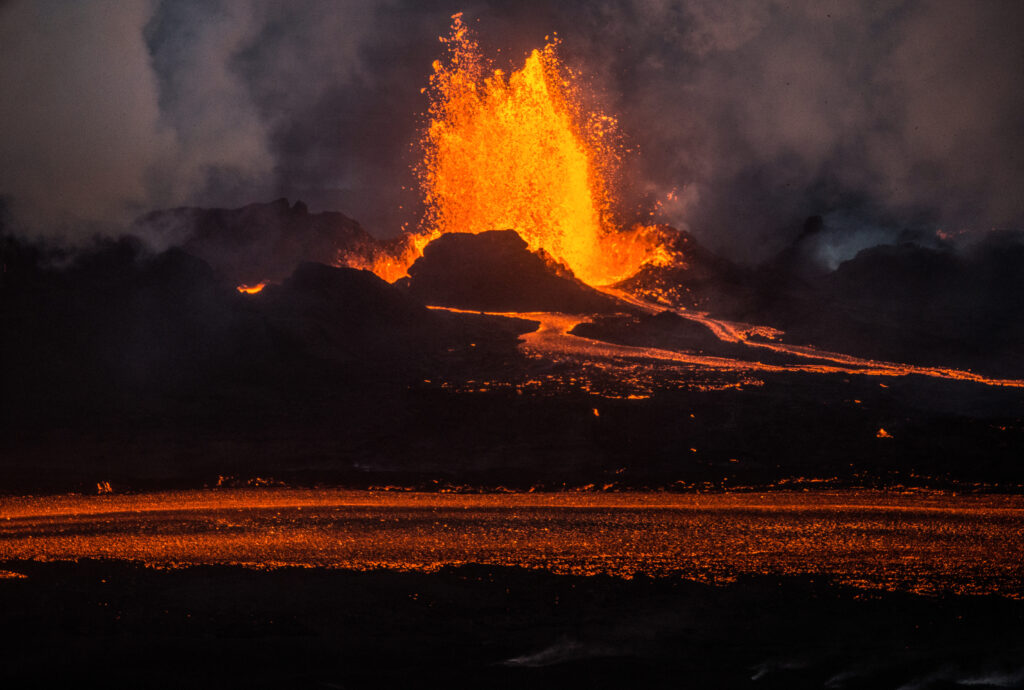
What if this year gave you the urge to go on an adventure? Everywhere on the planet, erupting volcanoes offer marvellous sights and unique memories to the walkers who come to survey them. So, from Sicily to Indonesia, from Iceland to Costa Rica, here's our ranking of the best places to go to see erupting volcanoes!
1. Etna in Sicily
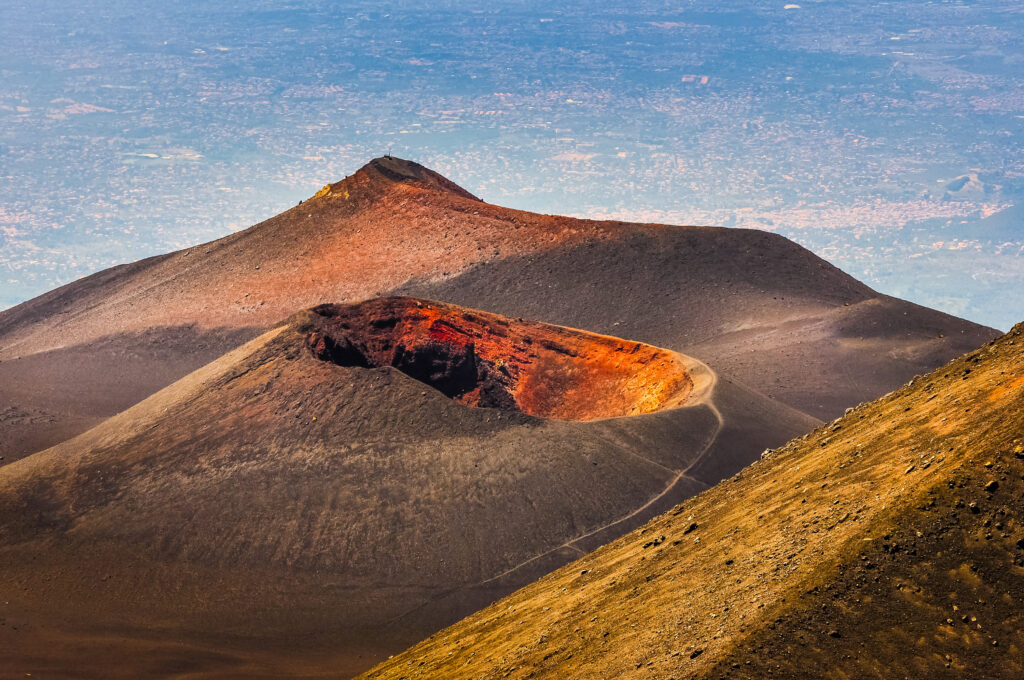
Etna majestically dominates Sicily's east coast, imposing its presence as much on locals, who consider it a member of the family, as on volcanologists, hikers and thrill-seeking travelers. Since the devastating eruption of 1669, which lasted 122 days and sent an immense torrent of lava all the way to Catania and the sea, several others have followed. One thing is certain: Etna never sleeps soundly, always ready to awaken, as it proved again in July 2024. Every time the volcano jolts, the Catanese invoke Saint Agatha to appease its wrath. Climbing Mount Etna is an unforgettable experience and one of Sicily's must-dos. This giant offers a fascinating spectacle of lunar landscapes, smoking craters and spectacular views of the sea and Sicily. The best times to climb it are spring and autumn, when conditions are ideal. Summer, though pleasant, attracts many visitors. In winter, the summit is cloaked in a blanket of snow, and access remains possible, provided you're well equipped with the right gear: snowshoes, crampons and mountaineering gear.
Read also: How to visit Etna What you need to know for the climb
2. Stromboli in Sicily

A veritable natural beacon in the Tyrrhenian Sea, Stromboli, one of the Aeolian Islands, is a spectacle in itself, with its perpetually erupting summit. Mainly composed of a volcano that has been active for over 2,000 years, it forms an almost perfect cone in the middle of the water, hence its name, derived from the Greek Stroggulè, meaning "round". At night, Stromboli, nicknamed Iddu ("him") by the locals who pay it an almost religious respect, offers a grandiose spectacle worthy of the world's finest fireworks displays. For an immersive yet safe experience, the local Etna Est Stromboli agency, based on the island and on Etna itself, offers excursions guided by experienced volcanologists. The best periods are spring and autumn. Although access to the erupting crater is no longer permitted , it is still possible to get as close as 300 metres to the caldera, accompanied by a guide, to observe this fascinating phenomenon at close quarters.
3. Where to go to see erupting volcanoes? Ol Doinyo Lengaï in Tanzania
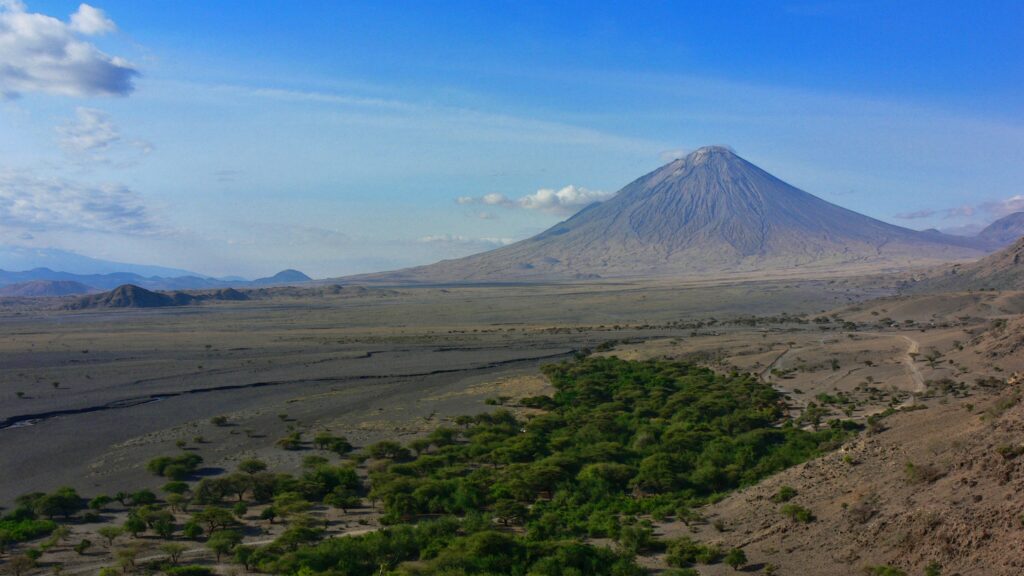
In Tanzania, the majestic volcano Ol Doinyo Lengaï rises to 2,878 meters and dominates the savannah and lake, often surrounded by white clouds. Appearing conical on the horizon, its concave slopes become steeper as you climb. The summit offers a breathtaking view of a crater 500 metres in diameter, where greenish and yellow cracks are visible, releasing sulphur-laden fumaroles. You can prepare for the climb in the village of Engaresero, where you'll find the guides' and rangers' offices. It can also be organized from Arusha via agencies, but with a 4x4 transfer it's more expensive. The ascent and descent each take around 4-5 hours at an average pace. It is common to start the ascent in the middle of the night, at around 1am, in order to watch the sunrise from the summit - an enchanting sight - and to avoid the heat. The best periods are June to September and December to March.
Read more: What to see and do in Tanzania The 20 most beautiful places to visit
4. Krakatau, Merapi and Bromo in Indonesia

Located on the Barrier of Fire,Indonesia is the country of a thousand volcanoes, around 400 of which are still active. In Sumatra, the majestic Mount Marapi, dominating the region at 2,891 metres, can be climbed without too much difficulty. Nicknamed the "Mountain of Fire", it is one of the 127 most active volcanoes in Indonesia, attracting many hikers. In Java, Bromo is one of the world's most impressive volcanoes! At 2,393 m high, it is actually made up of three volcanoes. Its mythical circus, 11 km in diameter, contains a lunar sea of sand at its center. There are some great sunrise photos to be taken during the dry season from May to October, although it is possible to visit during the rainy season. In Java, Carita beach is an excellent starting point for exploring Krakatau. The boat trip generally takes between 1h30 and 2h. Krakatau is one of the world's most active volcanoes. Its eruption on August 27 1883 was the most violent of modern times (some 13,000 times the power of the atomic bomb that ravaged Hiroshima). It triggered a gigantic cataclysm. In all, 20 km3 of rock were expelled from the bowels of the Earth. The explosion was felt as far away as Perth, Australia, and Rodrigues near Mauritius: a distance of almost 5,000 km! Tours to Krakatau volcano start in either Carita or Jakarta, depending on the tour operator. It's usually best to plan your trip with a local agency like Krakatautour.
Read also: What to see and do in Indonesia The 19 most beautiful places to visit
5. Where to go to see erupting volcanoes? Tolbachik and Karymski in Russia

The Plosky Tolbaltchik volcano (3,682 m above sea level) is located 350 km from Petropavlovsk-Kamchatski and is part of the Klioutchevskaïa volcanic group on the eastern Kamchatka peninsula, a UNESCO World Heritage site. The volcano is bisected by two calderas: the first, 3 km in diameter, was formed around 6,500 years ago. The second, 400 m high and 1.8 km in diameter, was formed in 1975-1976. A visit to the volcano, its cones and the "dead forest" is a unique experience. The best time to visit is from June to September. As for the Karymski volcano (1,489 m), also in Kamchatka. It is considered the most active volcano in the peninsula's eastern chain, having erupted dozens of times since the early 20th century. It last erupted in June 2024.
6. Pu'u o'o and Halemaumau in Hawaii

Kilauea ("vomiting" in Hawaiian) is the most active volcano on the planet. This shield volcano, located on the southeastern slope of the island of Mauna Loa, is currently just above the hot spot of theHawaiian archipelago. It is also one ofHawaii's most recently emerged volcanoes. Its pit-crater, Halemaumau Crater, was home to a lake until 1924. For Hawaiians, Halemaumau is the home of Pele, a famous goddess renowned for her hair and temper. On September 5, 2008, geologists discovered the presence ofa lava lake 100 m below the rim of the Halemaumaucrater, and the eruption has been almost constant ever since. An unforgettable spectacle! The Pu'u o'o cone on the slopes of Kīlauea is also mythical, even though it is forbidden to climb it due to its almost constant activity.
7. Piton de la Fournaise, Reunion Island
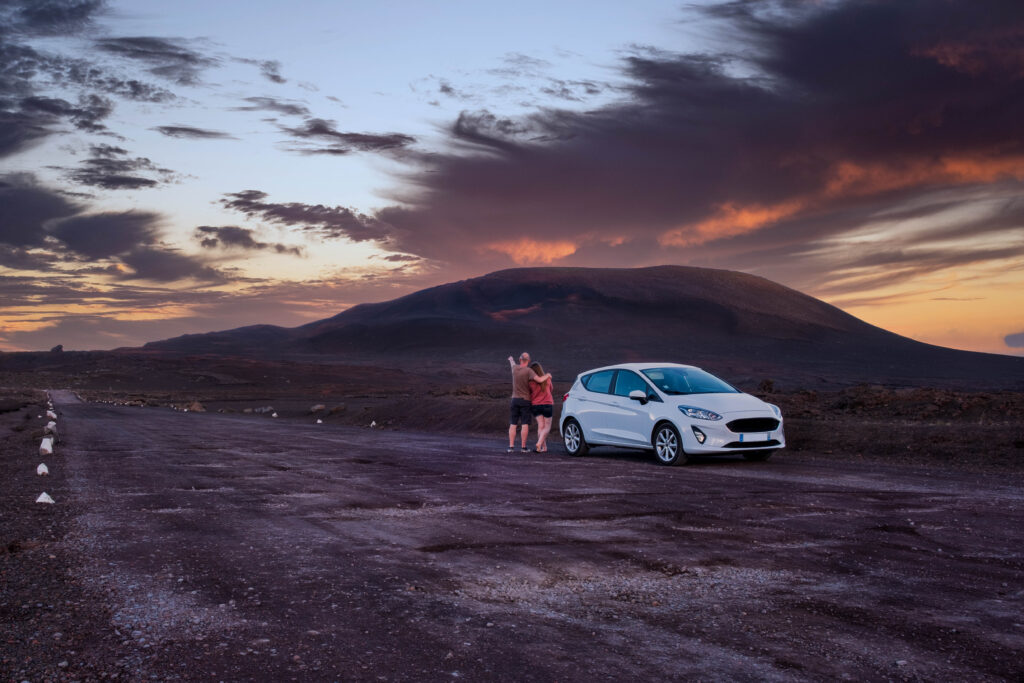
Rising to an altitude of 2,632 meters, Piton de la Fournaise is the undisputed emblem of Réunion Island and the most visited natural site in the Highlands. This extremely active volcano erupts on average once every nine months, releasing impressive lava flows. After a stop at the captivating Cité du Volcan in Bourg-Murat, head for the Piton de la Fournaise massif, which covers almost a third of the island. Its slopes are a testament to the power of nature, with vegetation gradually coming back to life after each eruption. The craters can be approached on a number of hikes. If you're interested, here's what you need to know to climb Piton de la Fournaise. Alternatively, watching the sunrise from the Pas de Bellecombe (accessible by car) is an unforgettable experience, offering a magical view of the volcano. Choose the dry season, from May to November.
8. Arenal in Costa Rica

In Costa Rica, where these are our top tours, Arenal represents the volcano in all its perfection, at once majestic and menacing, and ranked first among Costa Rica's must-sees. It's still young - its first eruption was barely 7,000 years ago - and its eruptions haven't yet truncated its summit, but that's enough to give you an idea of the prodigious strength of the monster, which manifested itself in earnest in 2002 with the collapse of a section of the crater. After 300 years of inactivity, people lived close to this mountain emerging from the lush hills without thinking for a second that it could present a danger. But in 1968, a violent earthquake, followed by a major eruption, completely destroyed a village. The summit, if not the entire volcano, is often hidden by clouds. On sunny days, tourists admire the view from La Fortuna , or head for private reserves or the park, with its many hiking trails from which to observe the flora and fauna, as well as ancient lava flows!
9. Where to go to see erupting volcanoes? Eyjafjallajökull in Iceland
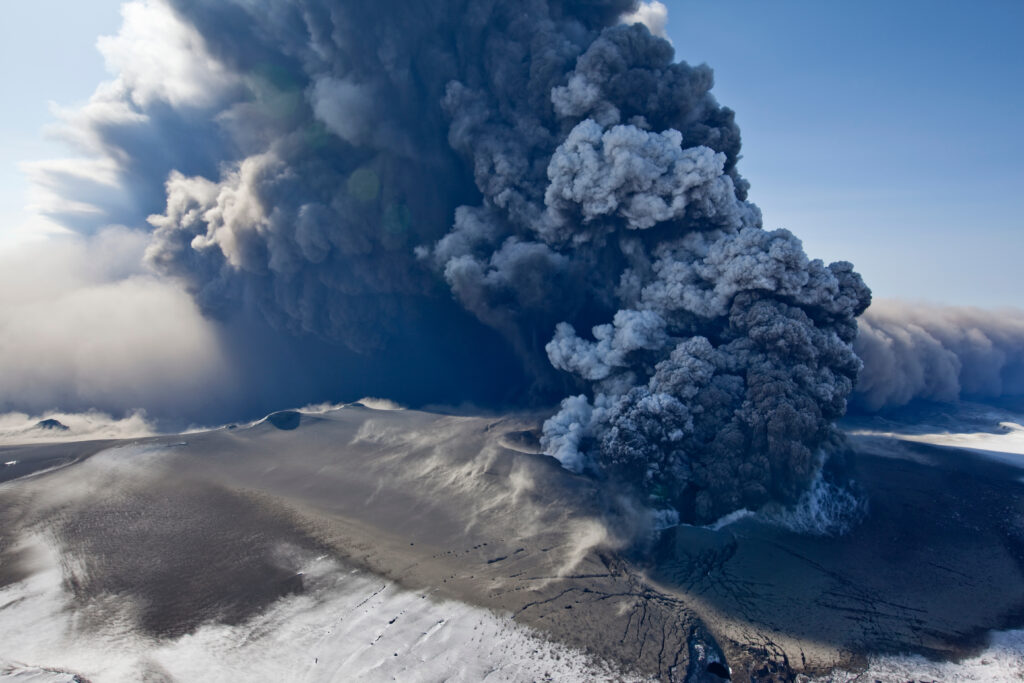
As a "hot spot", i.e. located at the boundaries of tectonic plates, Iceland is experiencing increased volcanism. In 2010, the Eyjafjöll volcano, one of the world's active volcanoes, whose ice cap is called Eyjafjallajökull, was also on every TV screen. The consequences of its eruption, three weeks after the first manifestations of this volcano that hadn't made news for almost 200 years, are still fresh in our minds. Its eruption on April 14, 2010 was accompanied by a massive cloud of ash, which spread across the sky, causing disruption and blocking European and global air traffic for several days. Today, the glacier is once again peaceful, and we recommend hiking it with a guide from an agency like Activity Iceland. The best time to go is between June and September.
Read also: What to do in Iceland The 15 most beautiful places to visit
10. Fogo in Cape Verde

Fogo is first and foremost a rounded island in Cape Verde, with many must-sees. Initially, it was called São Filipe, but with the fury of its volcano, the name Fogo (fire) was preferred. The central part of the volcano gives the sensation of arriving in another space-time, impressively silent. The caldera is covered with lava flows one on top of the other (the oldest of which date back centuries). It's a timeless space, an absolute minerality... But, contrary to what you might think, the volcano is a blessing for the locals, making the soil very fertile. Adventure-seeking travellers will climb the volcano accompanied by an agency such as Capvert-Rando. It's best to visit between November and May, during the dry season.
11. Bárðarbunga in Iceland

In Iceland, where these are our top tours, one of the most active volcanoes is Bárðarbunga, the country's second-highest at 2,009 m, which erupted in August 2014 in Holuhraun. It covers more than 65 km2, with a caldera 25 m deep. The main consequence of the eruption was to affect air quality as far away as France! However, the main threats were the disruption of air traffic and the appearance of an immense and devastating flood (jökulhlaup) following a major melting of ice from Vatnajökull, the country's largest ice cap.
Read more: Visiting Iceland in 15 days: the best route to take
12. Where to go to see erupting volcanoes? Masaya in Nicaragua

Masaya Volcano National Park, located just north of the town of the same name, is Nicaragua's most visited volcano. It is home to five separate craters and offers over 20 km of trails through wild and fascinating landscapes. Among active volcanoes, Masaya is one of the most accessible in the world. Its constant activity has shaped a unique landscape. In summer, the arid landscape lights up with colorful flowers, including orchids and sacuanjoche, Nicaragua's national flower. Chocoyos, small green parrots that nest directly in the crater despite the toxic gases, can also be seen. Hikers can venture out on several trails offering different views of the volcano and its surroundings. Don't hesitate to get in touch with local service providers such as Terra Nicaragua.
13. Erta Ale in Ethiopia
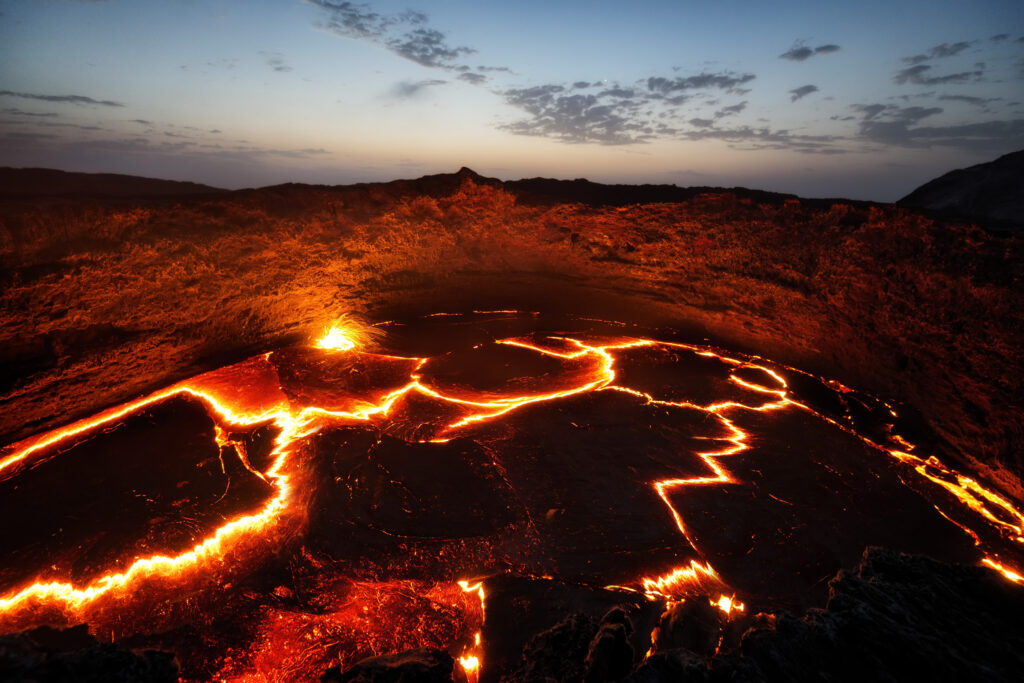
Ethiopia's Erta Ale volcano - "smoking mountain" in the Afar language - is located in the Afar Depression in the northern Great Rift Valley. It is one of only three volcanoes in the world with a permanent lava lake. A unique spectacle awaits adventurous visitors! Tour operators take tourists to Semara to admire the volcano. You'll need to spend a night or two here on your way to and from the volcano before setting off on your expedition. The town has very few private dwellings and only a few hotels.


